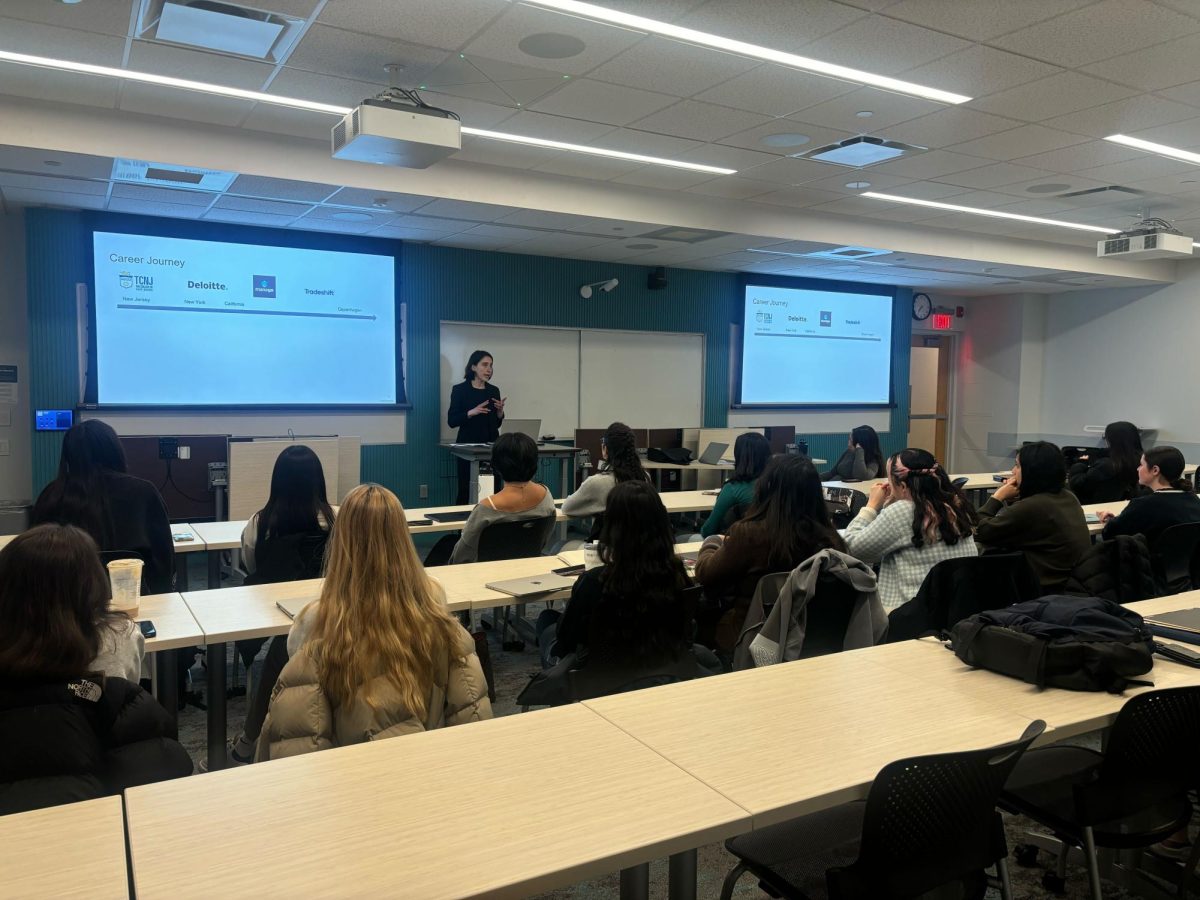By Camila Crews
Hip-hop has always been America’s foster child. Born on the cold, cement streets and in the dangerous halls of public housing buildings, hip-hop was a way of expression for blacks — just as jazz was before it.
Eventually, hip-hop found a home in the music industry. How would this culture and music form, that was not accepted until recently, make it into the university?
That was the topic of discussion when Murray Forman, assistant professor of communication studies at Northeastern University, and Emmett Price, assistant professor of music and African-American Studies at NU, collaborated with NU librarian Maria Carpenter to host a discussion entitled, “Hip-Hop and the academy, can they co-exist?”
Brought to life by Forman, the idea was actually sparked by students’ need to incorporate hip-hop into their academic studies. Forman said they are unaware of the resources that are available on our campus which can assist them.
“The opportunity to help our students in hip-hop research at NU was too good to pass up,” said Forman.
Students and faculty may ask, where does hip-hop fit into the university?
“The Academy must deal with real, everyday, practical life,” said Professor Price. “We pride ourselves on being an urban, experiential and practice-oriented institution. We need to deal with urban issues by experiencing them in the classroom.”
There are many historic events that have happened in hip-hop that have affected people within the culture, like the untimely deaths of Christopher Wallace (Notorious B.I.G.) and Tupac Shakur, two of hip-hop’s most influential figures. These two events will be remembered as a turning point in hip-hop’s history. What about the slaying of Jam Master Jay, the DJ for Run DMC, the first rap artists to go platinum and cross over into mainstream?
There’s also “Yo! MTV Raps,” which debuted on Aug. 6, 1988. Without that show today, there would not be daily shows dedicated to hip-hop like 106 ‘ Park on BET.
The evolution of hip-hop is an artistic revolution. Run DMC being able to cross over is the hip-hop equivalent of Rosa Parks not giving up her seat on the bus in Birmingham, AL. Although this may seem like an unlikely comparison, Run DMC laid down an easier path for those who came after them to walk on.
This talk proved that Snell Library does have some untapped resources that both students and faculty may not be aware of. Carpenter was more than happy to help when Forman approached her with the idea of having a discussion focusing on hip-hop and the materials that are available at Snell.
“I liked the idea a lot, and during planning we decided that a discussion would provide more depth and meaning to display that highlights the library’s collection,” Carpenter said. “This collaboration showed that the library’s collections are relevant to issues that appeal to students.”
Hip-hop has grown in so many ways. It is often referred to as a music genre, when in fact it is a culture and a way of life for some. Hip-hop can be seen around us every day, from the clothes some students wear to the vocabulary that they use. Hip-hop is a thriving force in this area and it’s time it was recognized. This culture can now be viewed on television commercials.
It’s ironic that three decades ago, hip-hop was swept under the rug, kept away from the masses, and today it is being used as a marketing campaign. Rapper Nelly has dedicated a song to the urban foot gear, Air Force One, and restaurant chains like Chili’s and McDonald’s have hired professional actors to beat box and sing catchy rap jingles to attract a younger audience to their establishments.
Price said the goals set forth for this discussion were “to show off the collection of materials dedicated to hip-hop in Snell Library, and inspire students and faculty to use it.”
These goals were met.
“[The discussion] certainly aroused my interest more,” said Rachel Gillett, a history graduate student, of the discussion surrounding hip-hop.
Another student agreed.
“[Hip-hop] makes me feel much better, if they don’t know where we are coming from, how can they understand?” said Allen Vaughn, a journalism graduate student.
Even some faculty have been persuaded to put hip-hop into their curriculum.
“This made me more open to students who want to do research work on hip-hop,” said Robert Paul, professor of African-American studies and history
In the words of Murray Forman, “Hip-hop, it don’t stop.” To prove that fact, Carpenter has compiled a bibliography of books specifically for those who want to know more about the hip-hop culture.
This bibliography can be found online at lib.neu.edu and clicking on NUCat and then going to the hip-hop literature.








